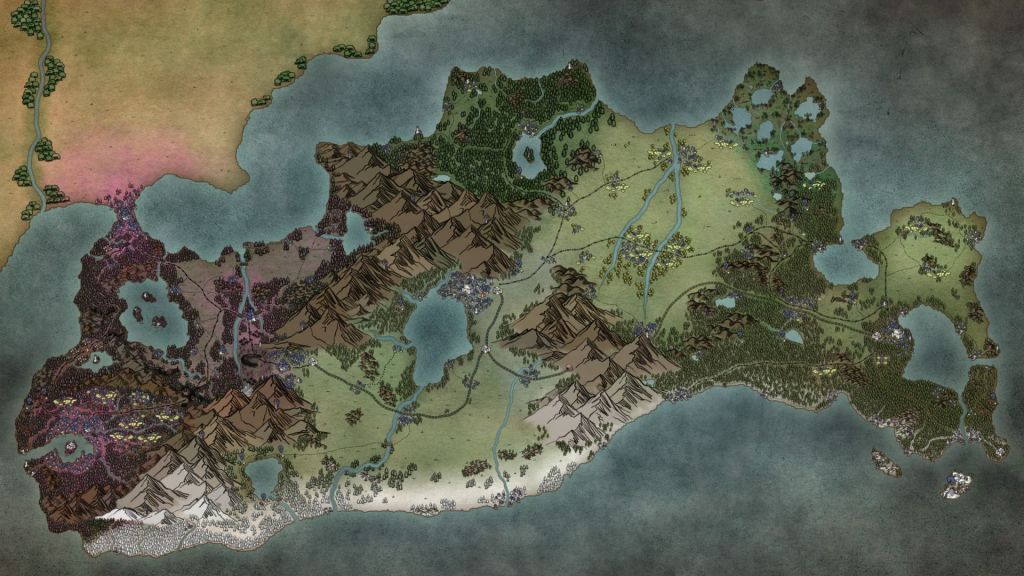Tabletop roleplaying games (TTRPGs) are all about immersion and storytelling, and creating a unique and engaging world is an essential part of that experience. Whether you're a game master (GM) looking to build your own world or a player looking to contribute to the worldbuilding process, here are some tips for creating a TTRPG world that's both compelling and memorable.
- Establish a Theme
One of the first steps in creating a TTRPG world is to establish a theme. The theme of your world will set the tone and guide the direction of your worldbuilding process. For example, you might choose a theme of post-apocalyptic survival, high fantasy adventure, or cyberpunk dystopia.
Once you've established a theme, you can start to build the world around it. Consider the tone, setting, and mood that your theme evokes and use those elements to inform your worldbuilding decisions.
- Create a Map
Creating a map of your TTRPG world is an essential part of the worldbuilding process. A map will help you visualize the world and give you a sense of its geography, topography, and climate. It will also help you keep track of locations and distances, which is important for planning adventures and campaigns.
When creating a map, consider the natural features of your world, such as mountains, rivers, and forests. Also, think about the political boundaries and cultural regions of your world, as well as the locations of important landmarks and cities.
- Develop a History
A rich history is one of the key elements of a compelling TTRPG world. Your world's history will inform its politics, culture, and conflicts, and give your players a sense of the world's depth and complexity.
When developing a history, consider the major events and conflicts that have shaped your world, as well as the cultures, religions, and technologies that have emerged as a result. Think about the key figures and organizations that have played a role in your world's history, and how their legacies continue to impact the world today.
- Create Interesting Characters
Characters are the heart of any good TTRPG world. Your world should be populated with interesting and memorable characters, from the heroes and villains to the everyday people who make up the world's population.
When creating characters, think about their motivations, goals, and relationships to other characters in the world. Consider their backgrounds, personalities, and quirks, and how those elements will influence their actions and interactions with the PCs.
- Incorporate Unique Elements
A truly unique TTRPG world should incorporate elements that set it apart from other worlds. This could be a unique magic system, a distinctive culture or religion, or a novel approach to technology.
When incorporating unique elements, consider how they will impact the world and its inhabitants. Think about the benefits and drawbacks of these elements, and how they might create new opportunities or challenges for the players.
- Encourage Player Input
Finally, don't forget to encourage player input when building your TTRPG world. Players can offer valuable insights and ideas, and their involvement in the worldbuilding process can help them become more invested in the world and its characters.
Incorporating player input into your TTRPG world is a great way to get your players more invested in your game. Here are some ideas for ways to incorporate player input:
-
Collaborative Worldbuilding
One of the easiest ways to incorporate player input is to include your players in the worldbuilding process. This can take many forms, from brainstorming sessions to collaborative map-making. Players can help you flesh out the details of your world, such as the history, culture, and geography of different regions. -
Character Creation
Another way to incorporate player input is to allow your players to have some say in the creation of their characters and their backgrounds. This can help them become more invested in their characters and the world they inhabit. You might consider asking your players to write a short backstory for their character, or to come up with a unique quirk or trait that sets them apart. -
Side Quests
Side quests are a great way to allow your players to have some agency in shaping the world. You might consider asking your players to come up with a side quest for their characters to undertake, or to suggest a new location or NPC for the party to encounter. This can help your players feel like they have a stake in the world and its inhabitants. -
Faction Creation
Another way to incorporate player input is to allow your players to create their own factions or organizations within the world. This can be a great way to add depth and complexity to the world, and to give your players a sense of ownership over their characters' actions and decisions. You might consider asking your players to come up with a name, a mission statement, and a hierarchy for their faction. -
Player-Driven Campaigns
Finally, you might consider running a player-driven campaign, where the players have more agency in shaping the direction of the story. This can be a great way to incorporate player input and to create a more collaborative storytelling experience. You might consider asking your players to come up with a campaign goal or objective, and to work together to achieve it.
==

Comments
Post a Comment